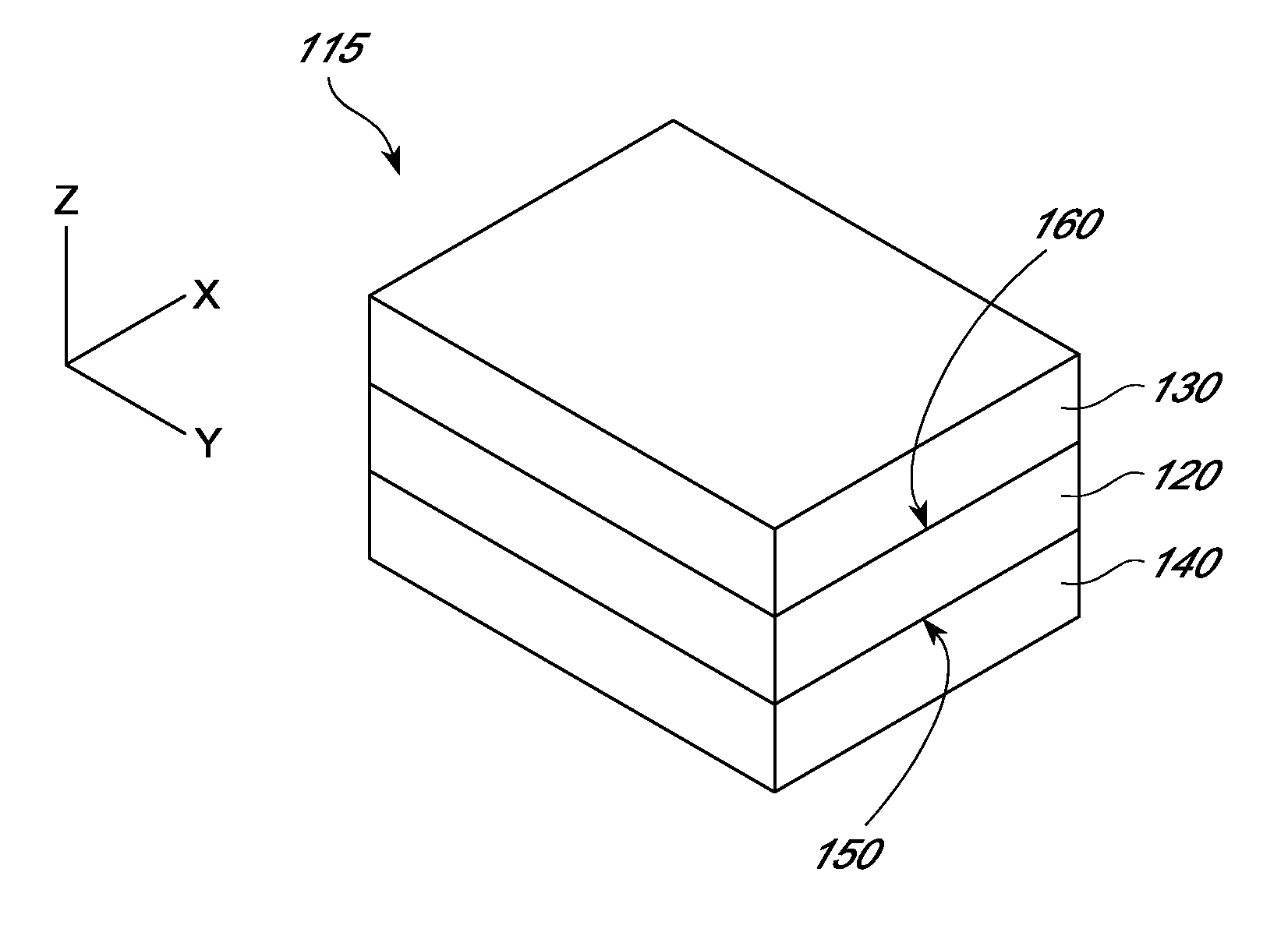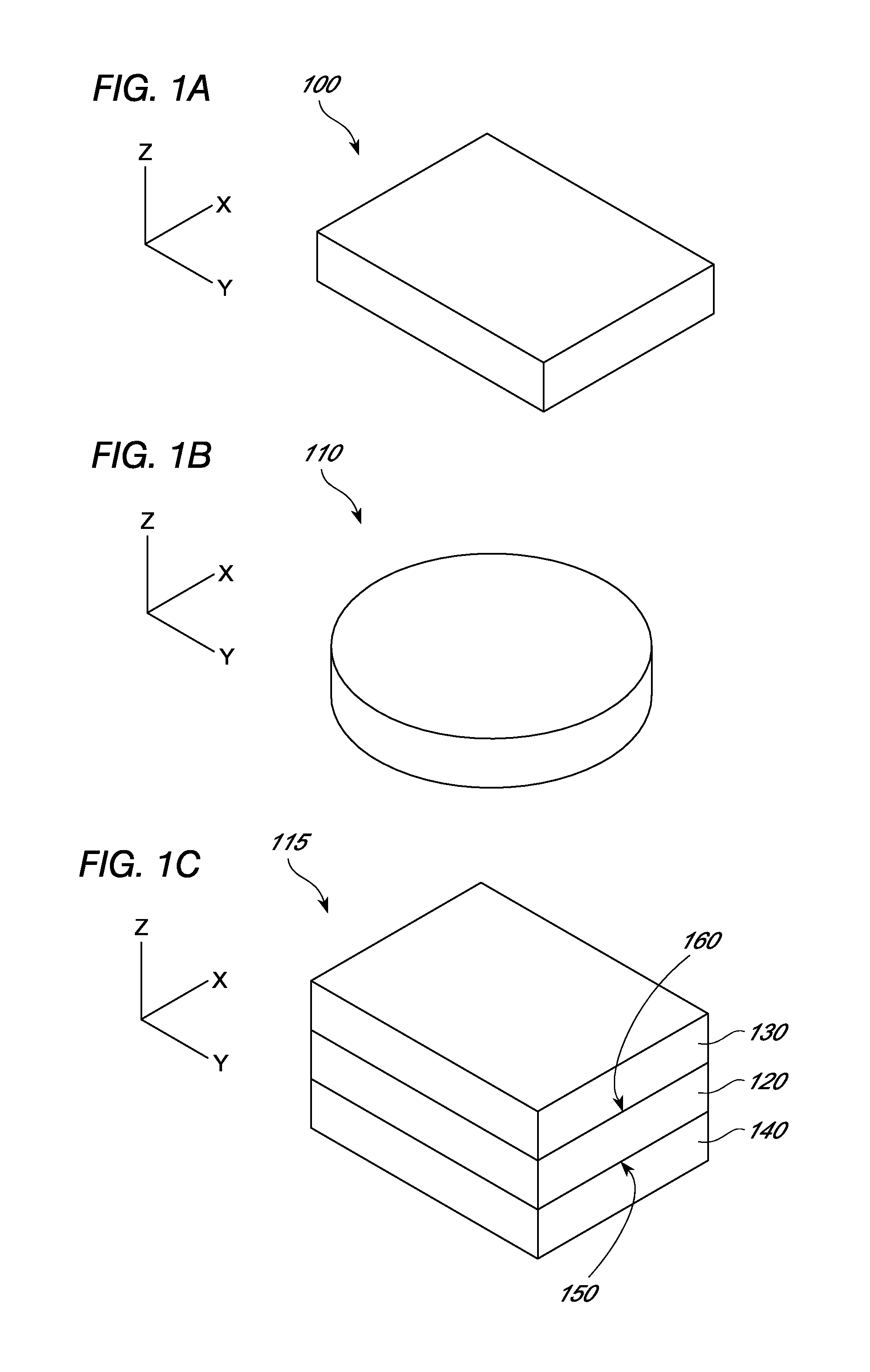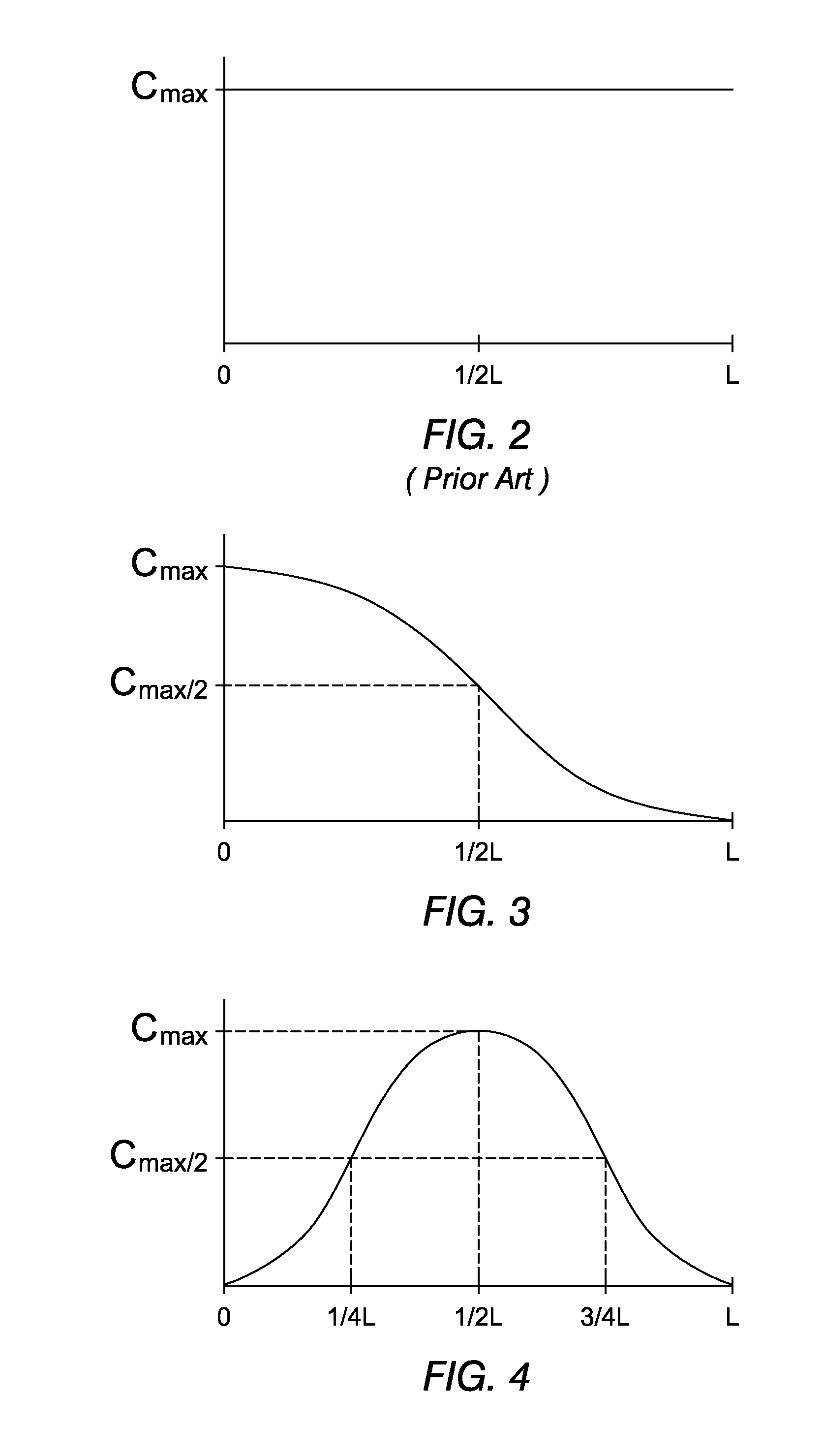Emissive ceramic materials having a dopant concentration gradient and methods of making and using the same
a technology of emissive ceramic materials and gradients, which is applied in ceramics, applications, other domestic objects, etc., can solve the problems of no reliable method of increasing iqe and reducing luminance efficiency
- Summary
- Abstract
- Description
- Claims
- Application Information
AI Technical Summary
Benefits of technology
Problems solved by technology
Method used
Image
Examples
example 1
Non-Emissive Layers for Laminated Composite (Undoped Host Material)
[0214]A 50 ml high purity Al2O3 ball mill jar was filled with 55 g of Y2O3-stabilized ZrO2 balls having a 3 mm diameter. In a 20 ml glass vial, 0.153 g dispersant (Flowlen G-700. Kyoeisha), 2 ml xylene (Fisher Scientific, Laboratory grade) and 2 ml ethanol (Fisher Scientific, reagent alcohol) were mixed until the dispersant was dissolved completely. The dispersant solution and tetraethoxysilane as sintering aid (0.038 g, Fluka) were added to a ball mill jar.
[0215]Y2O3 powder (3.984 g, 99.99%, lot N-YT4CP, Nippon Yttrium Company Ltd.) with a BET surface area of 4.6 m2 / g and Al2O3 powder (2.998 g, 99.99%, grade AKP-30, Sumitomo Chemicals Company Ltd.) with a BET surface area of 6.6 m2 / g were added to ball mill jar. The total powder weight was 7.0 g and the ratio of Y2O3 to Al2O3 was at a stoichiometric ratio of 3:5. A first slurry was produced by mixing the Y2O3 powder, the Al2O3 powder, dispersant, tetraethoxysilane, ...
example 2
Non-Emissive Layers for Laminated Composite (Al2O3 Material)
[0217]The non-emissive layers were made in accordance with Example 1, except that Al2O3 (5 g, 99.99%, grade AKP-30, Sumitomo Chemicals Company Ltd.) with BET surface area of 6.6 m2 / g was used instead of Y2O3 and Al2O3 powder as described above for the Al2O3 green sheet preparation. A green sheet of about 100 um thickness was produced.
example 3
Plasma Laminate for Emissive Layers
[0218]Plasma-produced amorphous yttrium aluminum oxide (with stoichiometry Y:Al:O=3:5:12) powders (5.2 g) containing 1.0 at % cerium with respect to yttrium with a BET surface area of about 20 m2 / g was added to a high purity alumina combustion boat followed by annealing in a tube furnace (MTI GSL-1600) at heating ramp of 3-5° C. / min to 1350° C. in air or 3% H2 / 97% N2 for 2 hrs. Then, it was cooled down to room temperature at a ramp of 5° C. / min. Yellow color powder with a BET surface area of 4.6 m2 / g was obtained after annealing.
[0219]A 50 ml high purity Al2O3 ball mill jar was filled with 24 g Y2O3 stabilized ZrO2 ball of 3 mm diameter. Then, in a 20 ml glass vial, 0.084 g dispersant (Flowlen G-700. Kyoeisha), 2 ml xylene (Fisher Scientific, Laboratory grade), and 2 ml ethanol (Fisher Scientific, reagent alcohol) were mixed until the dispersant was dissolved completely. The dispersant solution and tetraethoxysilane as a sintering aid (0.045 g 99.0...
PUM
| Property | Measurement | Unit |
|---|---|---|
| thickness | aaaaa | aaaaa |
| full-width at half-maximum | aaaaa | aaaaa |
| size | aaaaa | aaaaa |
Abstract
Description
Claims
Application Information
 Login to View More
Login to View More - R&D
- Intellectual Property
- Life Sciences
- Materials
- Tech Scout
- Unparalleled Data Quality
- Higher Quality Content
- 60% Fewer Hallucinations
Browse by: Latest US Patents, China's latest patents, Technical Efficacy Thesaurus, Application Domain, Technology Topic, Popular Technical Reports.
© 2025 PatSnap. All rights reserved.Legal|Privacy policy|Modern Slavery Act Transparency Statement|Sitemap|About US| Contact US: help@patsnap.com



